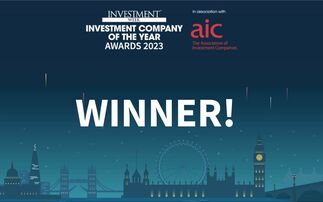Alex King, Wellington Management
As central banks start to think about cutting interest rates, forecasts for a peak in credit default rates are not far behind — and could happen sooner than expected. What does this mean for investors considering a move to high yield?
Defaults have been on the rise since 2022, when higher interest rates from central banks across the world started to feed through into higher borrowing costs for companies. But higher interest rates have caused less pain for companies than many investors expected. As a result, default rates are likely to peak much lower than they have in previous central bank tightening cycles. If this is the case, it has implications for portfolio positioning.
Why peak defaults may be lower
One reason why defaults may be peaking at a lower level than in previous cycles could be because many companies were in a very strong financial position at the point at which higher borrowing costs started to bite. The pandemic's record-low interest rates provided ample opportunity for companies to refinance existing debt at lower rates, leaving many businesses with strong balance sheets in the form of higher cash and lower leverage levels. When interest rates started to rise, significant numbers of companies were able to use cash to cover expenses, rather than borrow at high interest rates. This is ultimately likely to translate to a lower overall level of defaults for this point of the cycle, relative to other historical periods.
Having said this, even companies with strong balance sheets can only hold out for so long, and cash levels of corporations have been on a steady decline over the last couple of years. However, since last October, interest rates have been falling, and companies have been rushing to the market to issue more debt at lower rates. Interest rates in the riskiest part of the global high-yield market fell 2.5%[1] in the last two months of the year, making it much more attractive and affordable for companies to refinance. This fresh funding from the bond markets may once again give companies the opportunity to rebuild their cash reserves and swerve the risk of defaulting on their debt.
With investors expecting a continued decrease in interest rates in the coming months, as inflation moderates and central banks reverse some of their tightening, high-yield issuers should continue to feel the pressure ease. On that basis, I think defaults are likely to peak in the first few months of the year, trending steadily downwards thereafter.
What does all this mean for credit spreads and returns going forward?
Our team has done research looking at how credit spreads have behaved around the past six default peaks using Bank of America and Refinitiv data. Historically, a peak in defaults is typically associated with a tightening in credit spreads, which is good for bond returns.
During the course of our research, we made some interesting observations. Firstly, we saw that, on average, high-yield credit spreads tend to peak before defaults do. This is because default rates are backwards-looking by nature, and markets tend to move early, in anticipation of things getting better. Looking at historical credit cycles since the mid-1990s, spreads tighten significantly in the 6 - 12 months before peak defaults, which is a big support for bond prices (which move in the opposite direction to spreads).
We also observed that, historically, after the peak in defaults, credit spreads have tended to grind tighter over the following 12 months. So, even if you bought high-yield credit as the default rate peaked, which likely entailed missing some of the best performance, it may still have been a good entry point.
Finally, there was one period that bucked the trend. In 2002, spreads actually peaked after defaults did, and there was more volatility in defaults and spreads for some months. This was an environment that some termed a "rolling recession", as weakness shifted through different parts of the economy at different times.
What does this mean for high-yield credit markets today?
Spreads have already tightened significantly in the past couple of months, so some of the tightening that typically comes with peak defaults may have already played out. But if history is any guide to the future, the trajectory for spreads could be supportive for the asset class.
I think this could be an environment where spreads are quite boring, either moving sideways or slightly lower over the next 12 months. This is because spreads are already quite tight compared to history, and so any significant tightening would probably be limited. If this scenario of flat or lower spreads does happen, it could allow investors to receive a strong income (currently around 8%[2] in global high-yield markets), without spread widening eating into returns.
However, there is a risk to this view, which is a 2002 scenario, where there may be more weakness to come, and spreads can move higher. This is certainly plausible, and so it keeps me cautiously positive on the asset class. I think there are two key warning signs to look out for. Firstly, if inflation surprises to the upside and remains stickier than people think, meaning interest rates cannot be cut in the summer. Secondly, watch out for economic growth slowing more than people expect, reigniting fears of recession and weakness ahead.
But if you do believe the worst is behind us, it could be a good time to look for opportunities to add to high-yield positions, particularly if there continues to be strong issuance and demand in the market — an indication that companies are refinancing and rebuilding their balance sheets. In this instance, I would advocate for a cautious approach, where long-term positions are slowly built up over time, particularly if there is any short-term widening in spreads.
[1] Sources: Wellington Management, Refinitiv | 2.5% represents change in yield-to-redemption on the ICE BofA Global High Yield CCC and lower index between 31 October 2023 and 31 December 2023.
[2] Sources: Wellington Management, Refinitiv. 8% represents current yield-to-redemption on the ICE BofA Global High Yield index.














